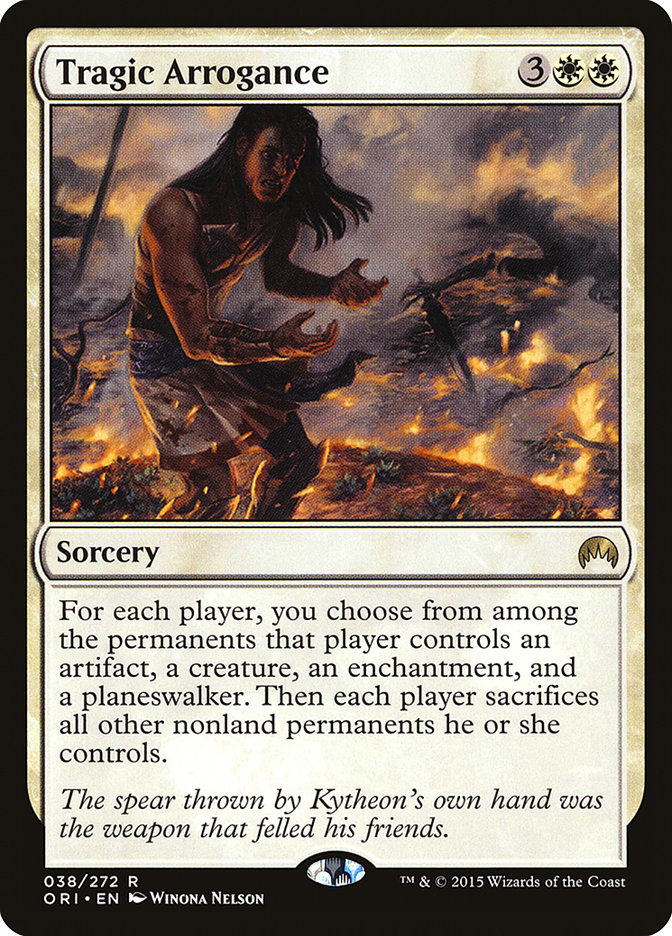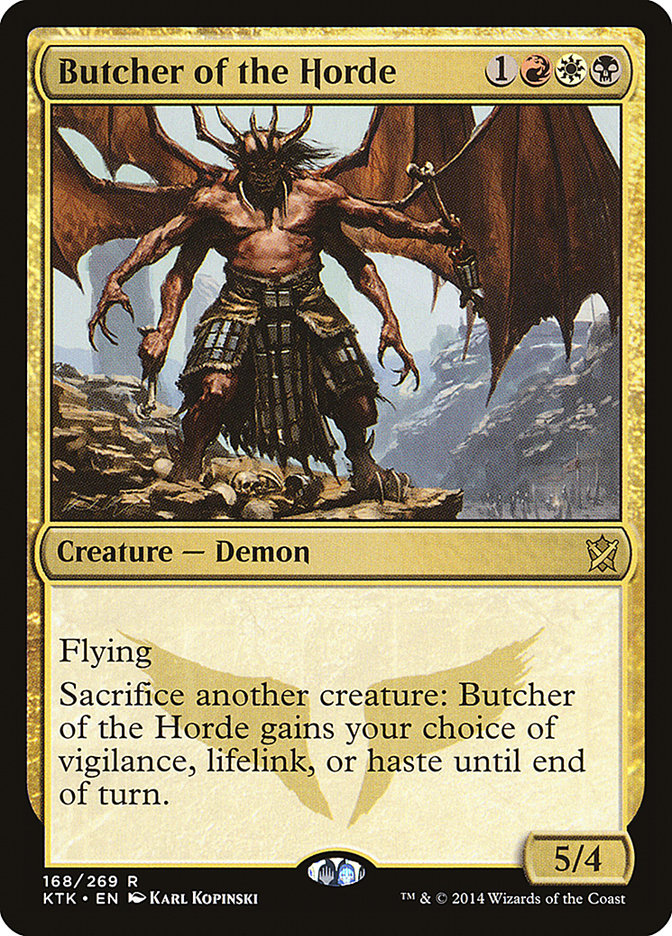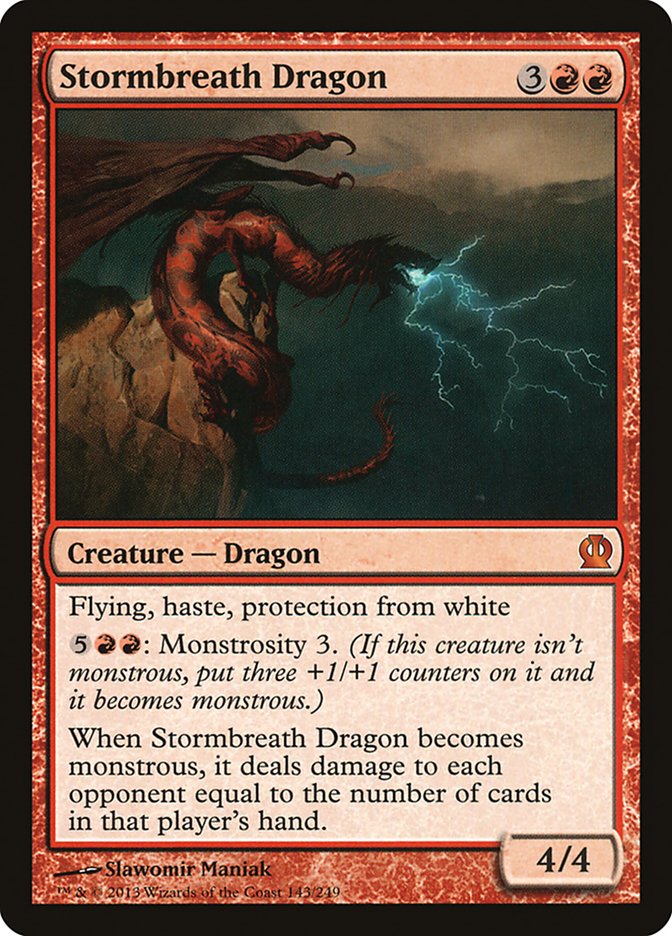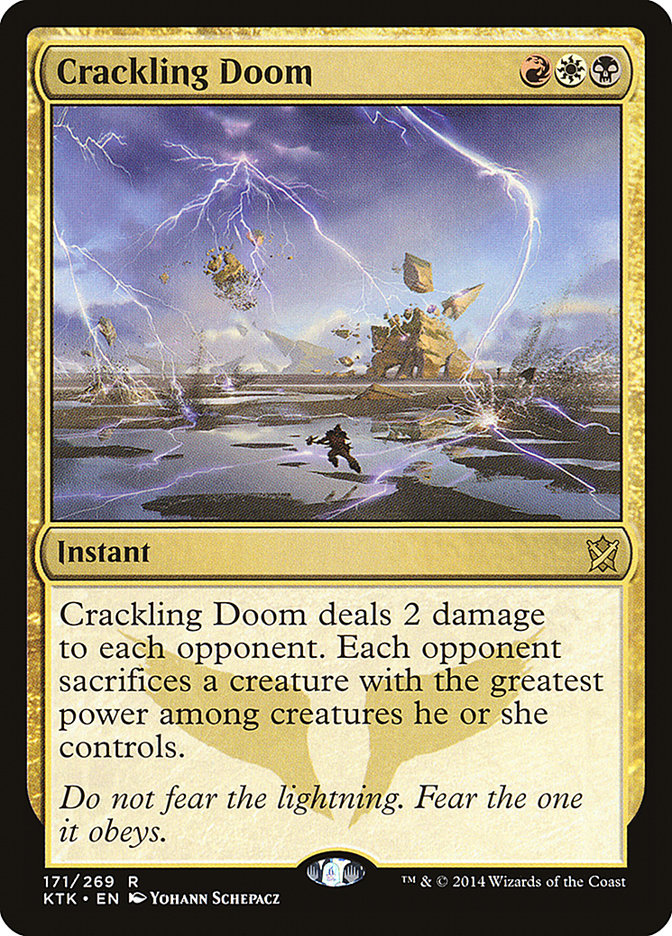I find the greatest satisfaction occasionally comes from shaking things up and attacking the metagame from an unanticipated angle that it hasn’t been hit from recently.
This weekend saw an upsurge in Jeskai, and although it wasn’t the build I talked about last week, a lot of the reasons for its positive performance is because the format is operating on a fairly predictable axis that Jeskai Aggro was easily able to exploit.
Creatures (13)
Lands (25)
Spells (22)

Creatures (19)
- 2 Stormbreath Dragon
- 4 Mantis Rider
- 4 Soulfire Grand Master
- 4 Thunderbreak Regent
- 1 Dragonlord Ojutai
- 4 Jace, Vryn's Prodigy
Lands (25)
Spells (16)

Ojutai’s Command is quietly the most value-oriented card in Standard right now. Standard operates under the guise that whatever we’re doing is relevant when the truth is that if you’re not casting Siege Rhino a large percentage of the time, whatever you’re doing is probably not. Thankfully, Jeskai occupies a portion of that pie that can now successfully ignore the Rhino due to the tools at its disposal.
Robert’s build is quite aggressive and heavy on the Dragon theme, and that serves him very well with a powerful curve and the ability to go from zero to sixty at the drop of a hat while still controlling the pace of the game with Ojutai’s Command, Dig Through Time, and potent removal spells. Gabe’s is far more traditional, opting for Disdainful Stroke, Jeskai Charm, and Lightning Strike over Draconic Roar.
Now that’s great, right? But today we’re not talking about Jeskai. I did that last week.
Instead, I want to start discussing a new direction to take… and in order to do so, I have to recall one of my favorite decks of the last year.
Creatures (16)
- 2 Stormbreath Dragon
- 3 Goblin Rabblemaster
- 3 Butcher of the Horde
- 4 Soulfire Grand Master
- 4 Hangarback Walker
Planeswalkers (1)
Lands (24)
Spells (19)

Ah yes. We’re back on the Mardu train.
Right off the bat, this deck bleeds synergy. Hangarback Walker and Butcher of the Horde interact very favorably, allowing you a few turns of pumping up the Walker before you offer up a juicy sacrifice to Butcher, giving you plenty of firepower in the air. Kolaghan’s Command, a card that back in March I said was my buy of the set, has popped over $10 because of how strong it is Modern. In this deck, it also brings a very powerful dimension both with our own Hangarback Walkers and as a removal spell that answers an opponent’s Walker with only half a card. Being able to rebuy your most prized artifact or a Stormbreath Dragon can be game-breaking, as is the shock and discard mode. In short, this deck is perfectly poised to take advantage of the best Command in Magic right now.
This deck used to sport Seeker of the Way, but Hangarback Walker provides more for this deck than the fragile white two-drop ever could. Soulfire Grand Master, however, is staying. This deck has a lot of ways to deal direct damage and capitalize on the ability to buy spells back, and with the many targets that exist out there, I knew I wanted the incidental lifegain the Master offered on top of the chance at card advantage. Goblin Rabblemaster and Hordeling Outburst are meant to keep the pressure on your opponent while doing their best to offer you a board presence that is resilient to a primarily one-for-one-removal format. With Abzan Aggro and Control, G/R Devotion, and Jeskai on top, I want cards that allow you to go wide against their often stronger board situation. Hordeling Outburst is criminally underplayed right now, and Goblin Rabblemaster may have fallen a bit out of favor but is still a card that punishes slow starts or stumbling.
In the finisher slot is one of my favorite creatures of all time: Stormbreath Dragon. Kolaghan’s Command allows for a duo of Dragons to become a serious threat if they are removed. Rebuying one at end of turn and smashing through an enemy who has their shields down is going to win a lot of games. With only 24 lands it’s possible that it might be too greedy, but so far it’s playing out quite well.
Of course the best reason to play this deck right now is the same reason that usually comes around every couple of months: Crackling Doom. With Siege Rhino, Fleecemane Lion, Mantis Rider, Thunderbreak Reagent, Dragonlords, and opposing Stormbreaths, Crackling Doom is the always the best card no one is playing.
I decided early on that I was still going to play a couple of Outpost Sieges because in non-Dromoka’s Command matchups it can be absolutely devastating. Still, you have to respect Dromoka’s Command because it’s such a prolific force in the metagame right now. That’s why I opted for a Chandra, Pyromaster. Not only can it be timely when played on curve in conjunction with Rabblemaster or Hangarback, allowing us to punch through some extra damage, but her zero-loyalty ability is another great way to get ahead of your opponent in cards. Is she the best option? Probably not. But for right now, she’s a smarter choice than going all-in on Outpost Siege.
Then there’s the sideboard! I love this sideboard, kiddies. It has everything I want!
Ashcloud Phoenix never ceases to amaze me as a creature that people have almost no respect for… but when you play it, they always groan. A few months back when I battled exclusively with Mardu, it was a driving force behind my crushing control decks, and it was the reason I was almost able to sweep through a Super Sunday Series. Despite sweeping changes since then, a lot of principles still remain, namely a freaking 4/5 trampling rhino.
Self-Inflicted Wound is an answer to Abzan Aggro, supplementing Crackling Doom as a way to get around bigger threats that your burn can’t. I wouldn’t rush to bring it in against Jeskai, even though they play Mantis Rider, Seeker, and Soulfire Grand Master. A lot of players tend to sideboard out those weaker two-mana creatures since they are veritable lightning rods in post-sideboard games. I would wait to see how they react to your plans before bringing them in.
Your first inclination when seeing Anger of the Gods is to think “that’s a non-bo” with most of the deck, and honestly you’re right. The best way to use it is to use your removal sparingly, build a board that can compete, and then drop the hammer on them with Anger the Gods when it’s advantageous and you can follow it up with a two- or three-mana play. One of the benefits of Hangarback Walker is that it can be grown to survive an Anger. Don’t forget that you can combine it with Soulfire Grand Master to gain huge chunks of life against Mono-Red too, as that play is just game over for them.
 The last spot I wanted to touch on is Tragic Arrogance. In testing there hasn’t been a card that performed better after sideboarding than Tragic Arrogance, and I’m strongly considering cutting something for a third one, but I don’t want to get too excited about it. In this deck it is an absolute soul-crushing machine against pretty much any opponent. You apply a very unique amount of pressure that only Mardu is really capable of exerting, using your speedy cards like Goblin Rabblemaster, burn spells, sacrifice effects and card advantage engines to keep your opponent off kilter. This goes way beyond normal when you hit them with a Tragic Arrogance and keep a Goblin Rabblemaster, Hangarback Walker, and whichever of Outpost Siege or Chandra is right for the metagame today. There is almost no recovering from it, and in games two and three I simply haven’t lost a game where this card resolved and I was in a slightly advantageous position. The best part is that you get to be liberal when trading creatures because Kolaghan’s Command brings back whatever you lost earlier, and it does tremendous work when the two marquee spells are combined.
The last spot I wanted to touch on is Tragic Arrogance. In testing there hasn’t been a card that performed better after sideboarding than Tragic Arrogance, and I’m strongly considering cutting something for a third one, but I don’t want to get too excited about it. In this deck it is an absolute soul-crushing machine against pretty much any opponent. You apply a very unique amount of pressure that only Mardu is really capable of exerting, using your speedy cards like Goblin Rabblemaster, burn spells, sacrifice effects and card advantage engines to keep your opponent off kilter. This goes way beyond normal when you hit them with a Tragic Arrogance and keep a Goblin Rabblemaster, Hangarback Walker, and whichever of Outpost Siege or Chandra is right for the metagame today. There is almost no recovering from it, and in games two and three I simply haven’t lost a game where this card resolved and I was in a slightly advantageous position. The best part is that you get to be liberal when trading creatures because Kolaghan’s Command brings back whatever you lost earlier, and it does tremendous work when the two marquee spells are combined.
Standard only has a little more than a month left to enjoy the goods of Theros Block for the last time, so I want to make sure I can pack in as much of the cards I’ll be missing as I can before the rotation happens.
With that in mind, Battle For Zendikar spoilers have started. I hear rumblings, and they aren’t Eldrazi…
We may be in store for the single best-designed set of all time, and I for one welcome our Eldrazi overlords.





